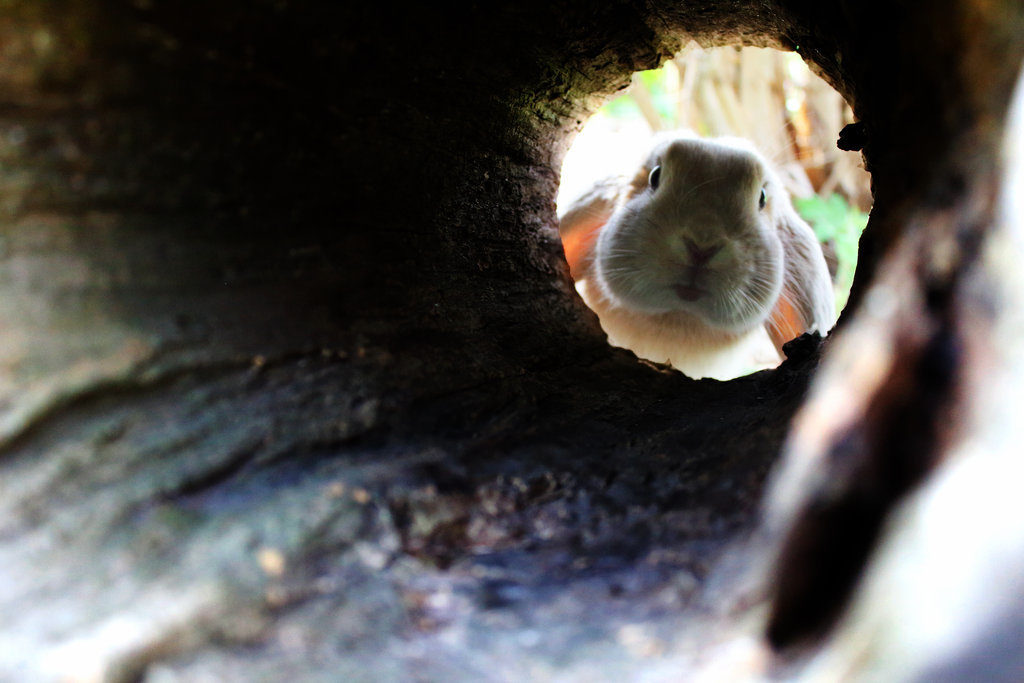
Welcome to Decrypting the Cryptic #9! Unlike my usual posts, today I’m not going to be explaining a particular rule or convention of cluing, but rather helping you figure out when you might be going down the wrong rabbit hole.
Everything I’m telling you presupposes you are solving an American cryptic and that you’re solving a puzzle or clue by an experienced constructor who knows the rules. Brits are allowed certain levels of trickiness that we Yanks are not, and because “the rules” are not particularly well codified, novice and intermediate puzzlemakers may make mistakes that break them. (OH HAI IT ME SOMETIMES)
Rabbit hole #1: Mixing up the straight definition and the wordplay
I’ve seen comments on some #explanationfriday posts that indicate that not everyone realizes that the straight definition and the wordplay in a cryptic clue must always be two discrete components. They don’t mix, at least not in American cryptics. (UK cryptics DO allow mixing; I’m not sure what the rules are for India, Australia, and other more recently colonized countries, but I suspect they’re more likely to follow UK rules.)
So, if you find yourself thinking that the first and the last words of a clue are a charade or anagram components leading you to an answer that’s defined by the words in the middle, stop it! You’re in a rabbit hole and it’s time to get out.
Rabbit hole #2: Can’t decide between two answers
This is one thing common to cryptics in every country, I believe: With all the information given to you, there should never be more than one correct answer to the clue.
This isn’t always true in standard American crosswords — probably the most famous example of all time is the New York Times 1996 Election Day puzzle, in which 39-Across could be CLINTON or BOB DOLE, either of which fit the clue and, amazingly, leading to all seven crossings working with their respective clues. It remains one of the all-time constructing feats in standard crosswords, but it’s not a thing that happens in cryptics!
Cryptic constructors want to be tricky and make you have a hard time getting to the answer — but once you get there, you should be sure it’s the answer. It’s part of the constructor’s job to write the clue such that, given all of the information available to you — including enumeration and, if we’re talking about a puzzle and not an isolated clue, crossing letters — there should be only one way to make everything work. (When making full puzzles, I also try to avoid writing clues in which there are two possible answers that you have to use the crossings to pick from, because that eliminates that entry as a possible foothold in the puzzle for the solver.)
This is why, for example, when I write #crypticclueaday, I avoid placing indicator words in the center of a clue if both the definition and the wordplay lead to answers of the same length. For example, “Low voice sounds evil (4)” is an unfair clue because it could lead to BASS (in which case “sounds” would be the homophone indicator for BASE, or “evil”), but it could also lead to BASE because “sounds” is in the middle and could also be indicating a homophone of BASS.
So, if you are really torn between two answers and you’re solving a puzzle by an experienced constructor, take a step back and look at the clue carefully again. At least one of your guesses is wrong!
Tell me more!
Just two rabbit holes today, but that’s in part because I’m a far more experienced cryptic solver than I am a constructor, and I tend not to get stuck in ways that relate to the rules — so I don’t know what else you guys might need help with! Please leave a note in the comments if there’s a clue you’ve been having trouble figuring out, and I’ll try to be your Clue Doctor and diagnose the problem in a future post, especially if your question indicates an issue with understanding the rules that other solvers might be having.
Don’t forget to check out #crypticclueaday on Twitter! I post a new clue each day using that hashtag (other constructors have been adding their own as well), and every week on #explanationfriday I give the solutions and a brief explanation of how to derive them. These clues are a great way to hone your cryptic solving skills and build your confidence up to solving a full puzzle.

One thought on “Decrypting the Cryptic #9: When to stop and try again”